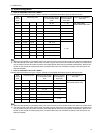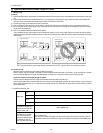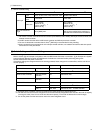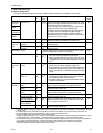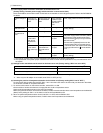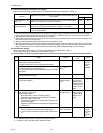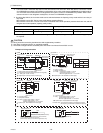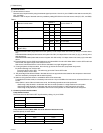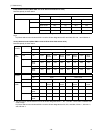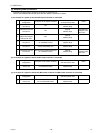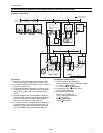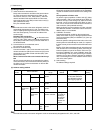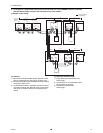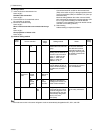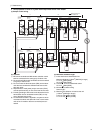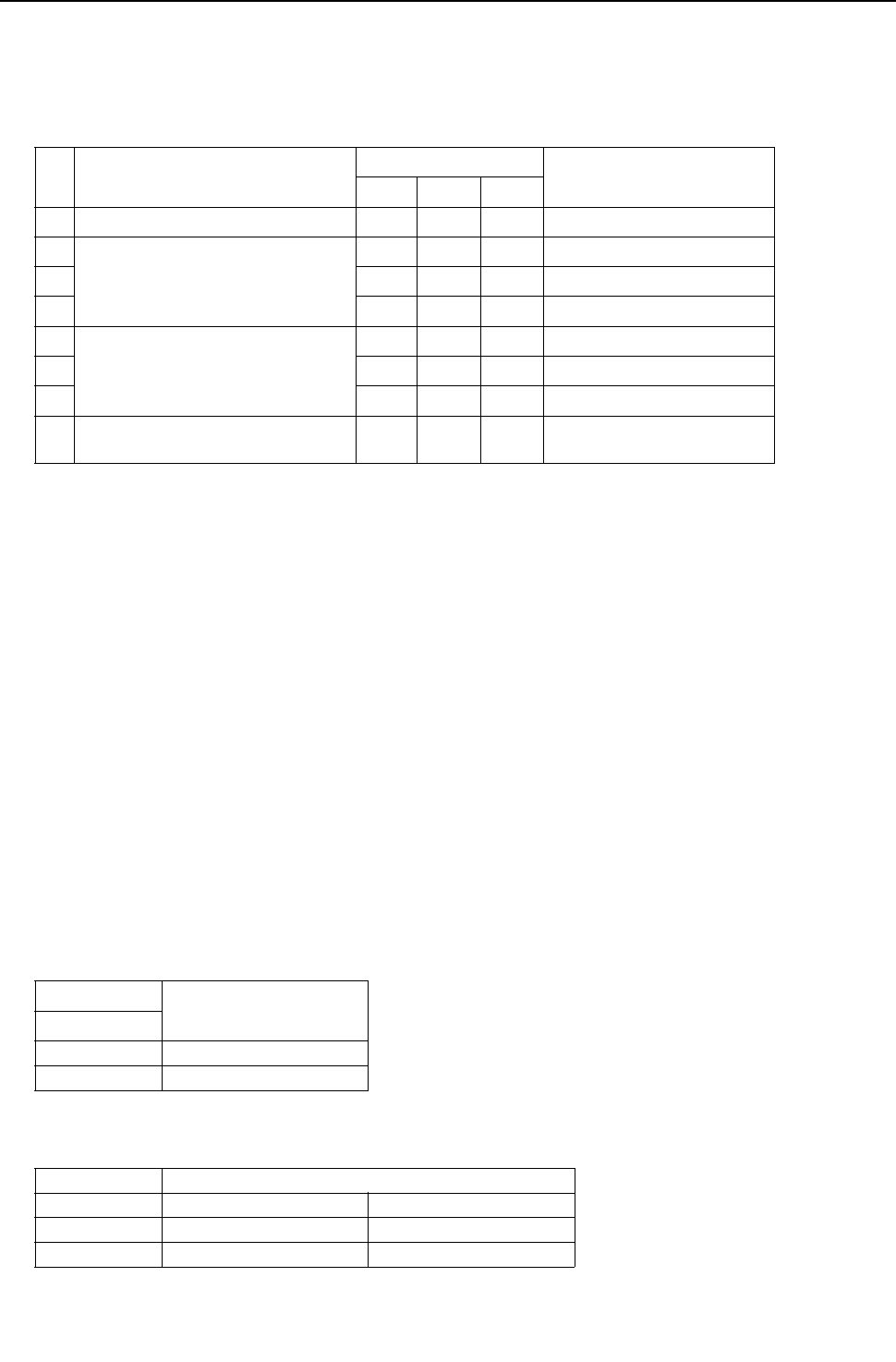
[ II Restrictions ]
- 24 -
HWE09080 GB
(8) Demand control
1) General outline of control
Demand control is performed by using the external signal input to the 1-2 and 1-3 pins of CN3D on the heat source units (OC,
OS1, and OS2).
Between 2 and 12 steps of demand control is possible by setting DIP SW4-4 on the heat source units (OC, OS1, and OS2).
P200-P300YHM models (single-heat source-unit system): 2 and 4 steps shown in the rows (a) and (b) in the table above
only.
P400-P600YHM models (two-heat source-unit system OC+OS1): 2-8 steps shown in the rows (a), (b), (c), and (e) in the
table above only.
P650-P900YHM models (three-heat source-unit system OC+OS1+OS2): 2-12 steps shown in the rows (a)-(h) in the table
above.
*2. External signal is input to CN3D on the heat source unit whose SW4-4 is set to ON. When SW4-4 is set to OFF on all heat
source units, the signal is input to the CN3D on the OC.
Heat source units whose SW4-4 is set to ON are selectable in a single refrigerant system.
*3. If wrong sequence of steps are taken, the units may go into the Thermo-OFF (compressor stop) mode.
Ex) When switching from 100% to 50%
(Incorrect) 100% to 0% to 50% : The units may go into the Thermo-OFF mode.
(Correct) 100% to 75% to 50%
*4. The percentage of the demand listed in the table above is an approximate value based on the compressor volume and
does not necessarily correspond with the actual capacity.
*5. Notes on using demand control in combination with the low-noise mode
To enable the low-noise mode, it is necessary to short-circuit 1-2 pin of CN3D on the heat source unit whose SW4-4 is set
to OFF.
When SW4-4 is set to ON on all heat source units, the following operations cannot be performed.
Performing 4-step demand in combination with the low-noise operation in a single-heat source-unit system.
Performing 8-step demand in combination with the low-noise operation in a two-heat source-unit system.
Performing 12-step demand in combination with the low-noise operation in a three-heat source-unit system.
2) Contact input and control content
2-step demand control
The same control as the Thermo-OFF is performed by closing 1-3 pin of CN3D.
4-step demand control (When SW4-4 is set to ON on an heat source unit)
Demand capacity is shown below.
Table.1
No Demand control switch
DipSW4-4
Input to CN3D *2
OC OS1 OS2
(a) 2 steps(0-100%) OFF OFF OFF OC
(b) 4 steps(0-50-75-100%) ON OFF OFF OC
(c) OFF ON OFF OS1
(d) OFF OFF ON OS2
(e) 8 steps(0-25-38-50-63-75-88-100%) ON ON OFF OC and OS1
(f) ON OFF ON OC and OS2
(g) OFF ON ON OS1 and OS2
(h) 12 steps(0-17-25-34-42-50-59-67-75-
84-92-100%)
ON ON ON OC, OS1, and OS2
CN3D
1-3P
Open x = 100%
Close x = 0%
CN3D 1-2P
1-3P Open Close
Open 100% 75%
Close 0% 50%




